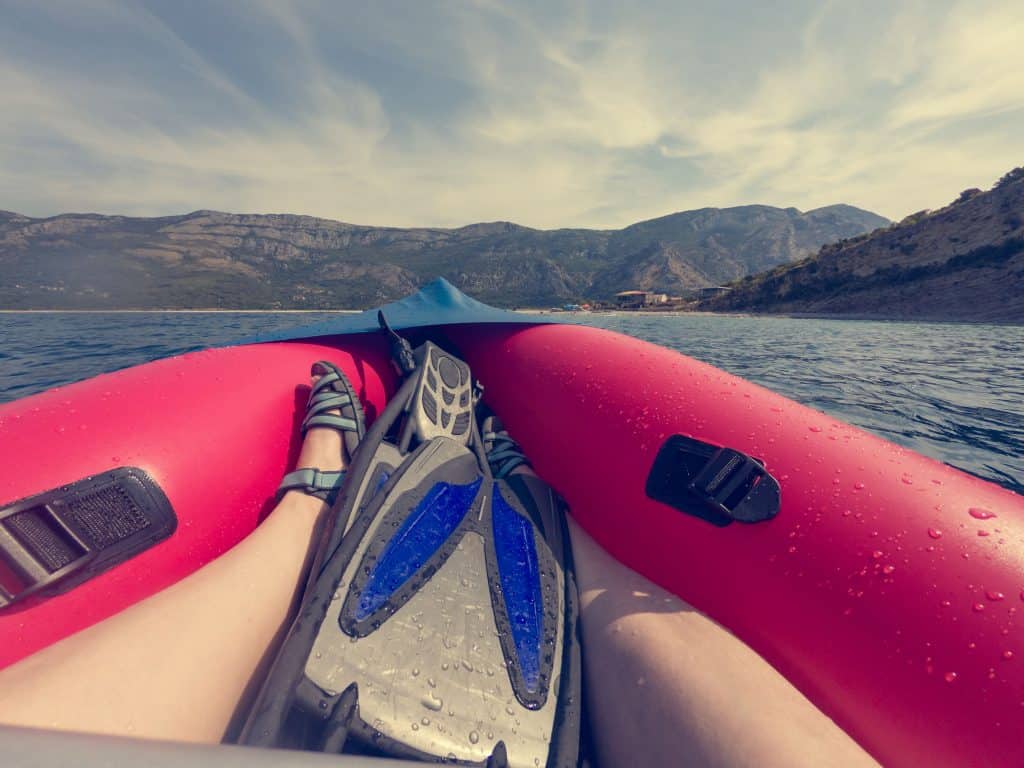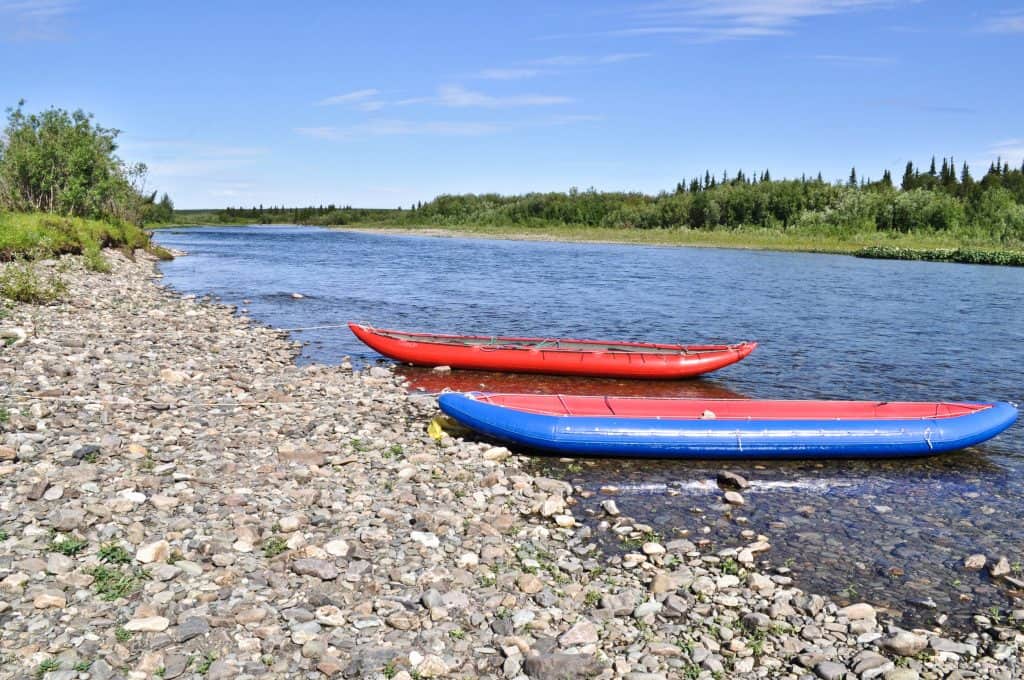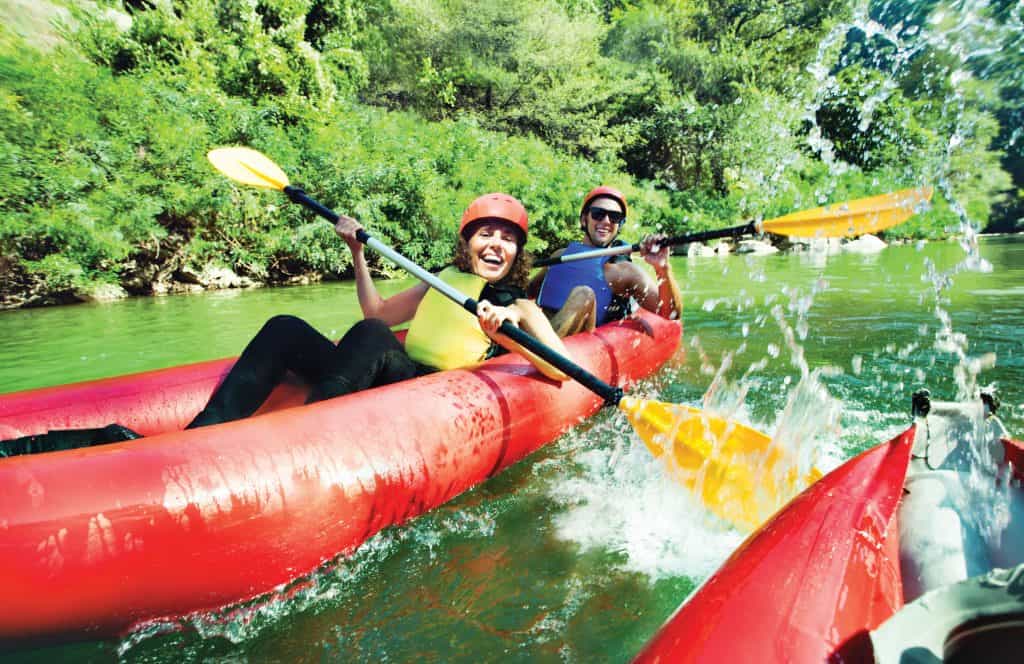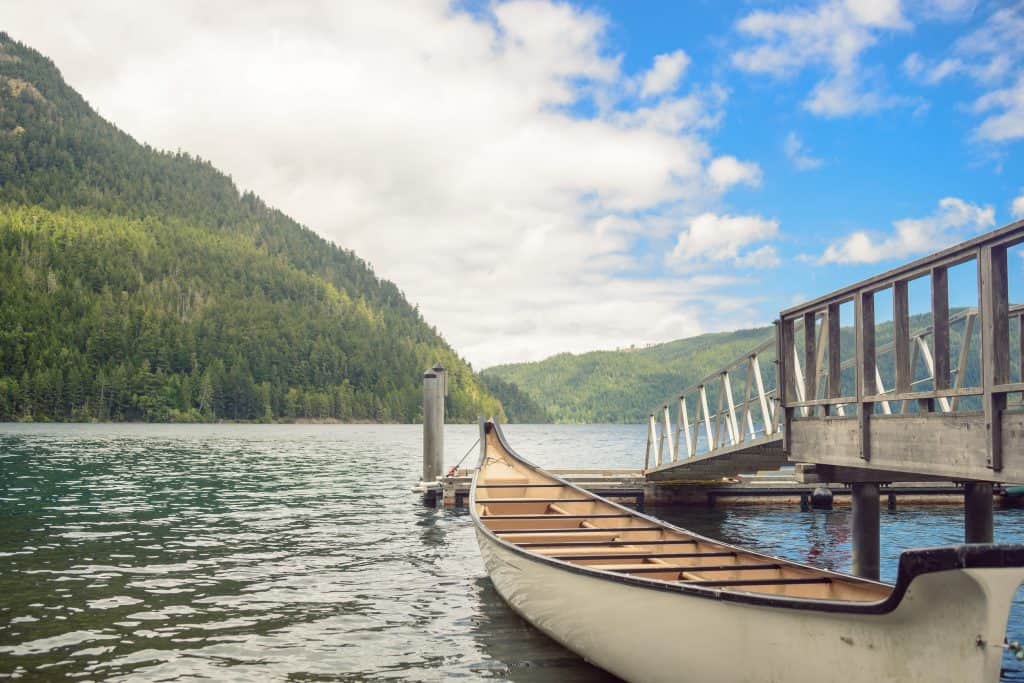
The popularity of inflatable canoes has greatly increased just over the last 10 years. With technical improvements and new developments occurring almost monthly, many canoers are wondering if switching to an inflatable canoe is a valid option.
Inflatable canoes, although increasingly gaining popularity, are not as good as traditional hard-shell canoes because of their durability. they also lack some key features but are easier to transport and store than the traditional canoe.
Though inflatable canoes may not be better than traditional canoes, they have a lot of factors and features that do help make up for the things they lack. Choosing between a traditional canoe or an inflatable canoe is really just choosing what is best for you.
Inflatable Vs Traditional Canoes
There is a lot of hearsay that surrounds the inflatable canoe when it comes to avid canoers. They are often considered to be taboo. Usually, people speculate whether an inflatable canoe can withstand the rough waters, strong currents, and the occasional collision that the traditional canoe does.
However inflatable canoes have proved to be a lot stronger than most people give them credit for. Though they may not have all the qualities that a hard-shell canoe has, they do possess qualities that most canoers really enjoy.
Inflatable Canoes
Many inflatable canoes fit the same size and shape of a kayak. Inflatable kayaks and canoes are also made from the same materials. Because of the similarity in size and shape to the kayak, and an inflatable canoe is smaller than the average hard-shell canoe.
Inflatable canoes also weigh significantly less than a hard-shell canoe. While, on average, a hard-shell canoe usually weighs from 50-80 pounds, an inflatable canoe can weigh anywhere between 20-40 pounds! This makes them so much easier to carry around.
Of course, one of the main reasons inflatable canoes are so popular is because they can be inflated and deflated. When deflated, the canoe can be stored in small spaces, even a backpack! Which makes traveling with a canoe far less troublesome.
Also, almost all inflatable canoes come with their own pump which helps, not only with a quicker inflate, but a quicker deflate as well. With inflatable canoes, there is no hassle in trying to rig a canoe to the car or having enough space in the garage to put a 16-foot canoe.
Many fishers tend to stay away from inflatable canoes because most don’t come with the option to add on a trolling motor. A trolling motor is a motor that can be placed on a canoe that keeps the canoe moving through the water without the canoer having to paddle.
However, there are many inflatable canoes that can be bought with a motor already installed. This gives the inflatable canoe an even greater value, all while remaining at a low price when compared to most traditional canoes.
The best inflatable boats will be made with “drop-stitch technology”.
Some canoers do worry that inflatable canoes do not offer durability or stability as hard-shell canoes do. While they do not have the same high durability or stability, they are still made to withstand knocks and bumps.
The best inflatable boats will be made with “drop-stitch technology”. This means that the fibers inside the material interlock as soon as the boat is inflated which create a tough surface.
The outer layer of an inflatable boat is also made from durable rubber and PVC, which are the same materials used to make lifeboats and white water-water rafts.
Lastly, each inflatable canoe goes through a series of tests to prove that it is ready to be sold. It is extremely rare that an inflatable canoe is sold with a defect.
If still in doubt, watch Sea Eagle take one of their famous inflatable boats and test it against different obstacles, like a hammer and a car!
Hard-shell Canoes
While hard-shell canoes can be more expensive and heavier than an inflatable canoe, there are a lot of things that a hard-shell canoe can take and do that an inflatable canoe just can’t.
For instance, a hard-shell canoe is usually much faster than an inflatable canoe. This is because usually a hard-shell canoe is specifically designed to form a V shape on the bottom.
This shape allows the canoe to cut through the water. This allows the paddlers to push through the water easier and it creates a greater glide through the water. Because the canoe cuts through the water there is much less effort that needs to go into paddling.
Though inflatable canoes can hold a good amount of weight, a hard shell canoe has the potential to hold a lot more. Inflatable canoes can usually hold about 100 – 500 pounds, but a traditional canoe can hold up to 1,000 pounds of weight!
Now, some may think that there is no way someone needs 1,000 pounds in a canoe but there are many things to consider.
A lot of canoers will go out camping on their canoe. This means that they will take camping equipment, food, fishing equipment, different gear depending on whatever activity is planned, and usually, more than one person is involved. All these things can add up to a lot of weight, that perhaps an inflatable canoe could not hold.
Hard-shell canoes also offer a lot more room and space for canoers. As inflatable canoes are more like the size of kayaks instead of canoes, it means there is less room for people and less room for equipment, gear, and other necessities needed for canoeing.
Hard-shell canoes are also a lot more durable and stable than inflatable canoes. Hard-shell canoes can withstand hard hits from jagged rocks without getting easily punctured. An inflatable canoe can be punctured easily and that means you usually lose the canoe.
A hard-shell canoe that is damaged or punctured can usually be fixed with a repair kit, and be as good as new. However, as of right now, an inflatable canoe cannot be repaired well enough to save the boat. If damaged, an inflatable canoe needs to be completely replaced.
Hard-shell canoes are more family friendly.
Hard-shell canoes are also more stable. Because traditional canoes are made out of hard and sturdy materials, and not filled with air, the less likely they are to flip when a canoer is entering or exiting, or with rough waters or strong currents and winds.
Hard-shell canoes are easier to control when the weather is bad, and the currents are strong. They will not fly around easy with a strong gust of wind and will no get easily pulled into strong currents, especially when in white water.
Lastly, hard-shell canoes are much more family friendly. They often are used on family vacations because they can hold up to 5 people. Little kids and even dogs are able to fit inside a hard shell canoe, which makes them a lot more fun to use because the whole family can be included.
The Cons: Traditional vs Inflatable
| Traditional: | Inflatable: |
| Heavy | Less durability |
| Takes a lot of space | Less stability |
| Expensive | Lack of repair-ability |
| Requires Maintenance | Carries less |
| Lack of portability | Hold less weight |
| Sun Damage | Lack of room |
| Cracking | Slow |
| Peeling | Easily punctured/damaged |
| Sun exposure and heat | Inflating and deflating time |
| Less flexibility | Must completely dry out |
Traditional canoes also have problems with sun damage and sun exposure. Aluminum canoes especially tend to become incredibly hot if out in the sun too long. Plastic canoes will often melt and form dents easily when exposed to the sun. Traditional canoes are also susceptible to cracking and peeling.
Inflatable canoes also take time to inflate and deflate. With a pump, this could take 5-10 minutes to inflate and deflate completely, but without a pump inflation and deflation could take hours.
Inflatable canoes must also be completely dried off before being stored because they can mold and mildew easily.

Features of Inflatable Canoes
Inflatable canoes do come with some great features that most traditional canoes don’t. Of course, most of them come with a pump and carrying bag, but they can also come with adjustable seats.
Whether they are bench seats or chair like seats, most inflatable canoes have the ability to fit the seat so they can comfortably hold each canoer and because it is inflatable they are softer than regular canoe seats.
Inflatable canoes can also be made in different colors and styles. Usually, traditional canoes come is solid colors and in most of the same shapes. However, inflatable canoes can come in a variety of different colors.
Inflatable canoes can also have high sidewalls, different top designs, like netting, and long thin and narrow models or short and wide models. Also, many inflatable canoes come with side rings for trying the canoe to the dock and places to hold the paddles.
Different inflatable canoes can come with tracking fins as well. This is an optional fin that can be placed on the underside of the canoe. These fins help prevent the boat from swaying too much.
And recently, high-pressure models have come to market. High-pressure models use improved stitching and fabric, which makes them more rigid, which increases durability and stability. Which helps make the inflatable canoe more like the traditional canoe.
Does Price Make a Difference?
Traditional canoes are very expensive. They can range from 650 dollars to about 3,000 dollars. It all depends on the quality, size, brand, and material of the canoe.
A lot of factors go into making a canoe which can make it as expensive as it is. The process of gathering the materials and constructing them is time-consuming and tedious. Wood canoes tend to cost a lot more because they are made from hand rather than a machine.
Because of the cost of traditional canoes most people choose to buy used and not new, but with inflatable canoes at much lower costs, they are a much greater possibility.
Inflatable canoes usually cost from about $250 – $600. That is a big difference in price, but it all depends on what is best for the buyer. If money is a big issue and a canoer is not able to buy a new canoe but doesn’t want to buy a used, an inflatable canoe is THE way to go.
You get what you pay for!
However, there is a lot to look out for! Remember that you get what you pay for! You can find inflatable canoes for as low as $30 dollars but they will not be good canoes.
The more you pay for something the better quality it is because better materials were used. Make sure to study up on the inflatable canoe you want to make sure that if you spend the money it will get you a good canoe.
Price can have a difference on certain people, but if other canoers don’t care about price as much it might be better to go with a traditional canoe that can offer more of a secure feeling.

Hard-shell vs Inflatable Background
Traditional or hard-shell canoes have been around for hundreds of years and are even older than most countries. The earliest canoe found was in Denmark and dated about 5300 BC.
The traditional canoe was made from woods strips, tree trunks, bark, and animal skin, which would be laid in the canoe to insulate it and to stop leaks.
Traditional canoes have been found all over the world and until the mid-1800s were the top mode of transportation for water travel. As time went on canoes did loose popularity but have never gone under the radar.
Though canoes are not used as much as they used to be, they are still a popular boat. With advanced technology and the discovery of new materials, the wood canoe is no longer a staple.
Aluminum, plastic, fiberglass, and Kevlar are just a few of the new materials that make up canoes today. As manufacturers sought to create a new, creative, and less challenging canoe, they stumbled upon the idea of an inflatable canoe.
But it is hard to beat the original canoe.
Although the concept of an inflatable canoe has been around since the late 1800s, it wasn’t until the 1960’s that the concept came to life. Sea Eagle was one of the first manufactures to release an inflatable canoe and to this day they have the best reviewed inflatable canoes.
Which is Better Overall?
Overall, it just depends on what canoe is best for the buyer. Remember to always take into account all the information for the canoe you are buying. If you know what you want and more importantly if you know what you don’t want, you will always end up with a canoe that you’ll love.
If you are looking for more of a fun, bouncy, laid back canoe, the inflatable canoe is probably the way to go. An inflatable canoe is a good play boat to have.
If you are looking for a more professional, family friendly, long term boat then sticking to a traditional canoe will most likely suit you best!
All in all, remember to pick what fits you and your plans best. Canoeing is all about having fun, taking time to enjoy nature, and relaxing. As long as you pick a canoe that can do that for you, you’ve got the best one for you!

